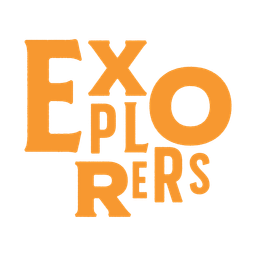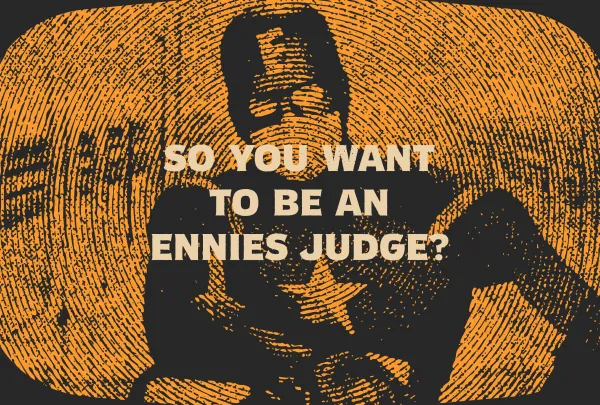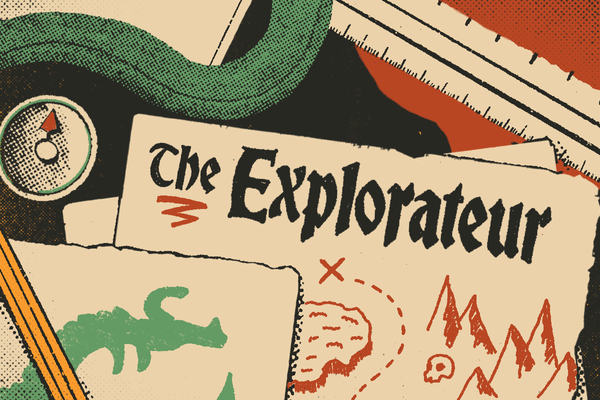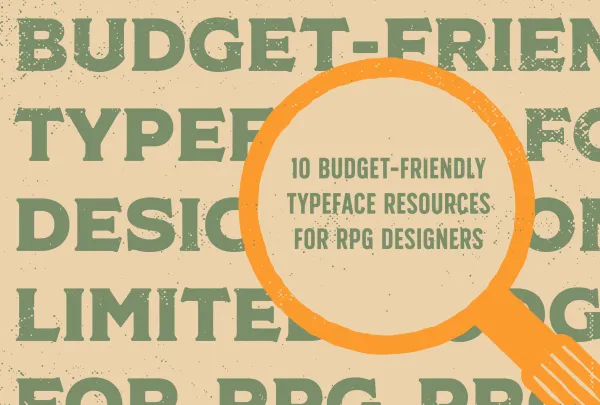The Explorateur: Issue #5
Monthly design discoveries for tabletop rpg designers including jams, critique, theory, and tools. Vetted. Looted. Curated.

Explore in unexpected places.
Design and advertising schools tell students to look beyond the industry for their inspiration. Read poetry, watch movies, bake bread—do anything besides look at design all day. The reason is simple: Limiting your inspiration leads to homogenous derivative slop, and while it's true there's nothing wholly new under the sun, it's in the rearrangement where things stay fresh. If something seems 100% original to you, it's because you don't know the sources.
The same goes for roleplaying games. If you want to make something that's original, you need to start filling that Hadron Collider between the ears with stuff that doesn't go together. Your brain finds a way.
The obvious place to explore is board games. No one has made an RPG that feels like Agricola or Galaxy Truckers, and that's a tragedy. Somewhere, right now, generic wooden cubes are waiting to be used. Instead they gather dust. The same goes for a thousand other mechanics and themes, and that's just next door from roleplaying games. The real cool places aren't games at all.
Let me offer a bounty board of places to explore. (Feel free to add your own in the comments below or on social.) Whiskey distilling. Hiking the Appalachian Trail. Putting pottery together like an archaeologist. Collecting sticks that look like swords. Oyster shucking. Woodworking. Educational simulations. Running a movie theater. Robert's Rules of Order. Shearing sheep. Organizing a union in a textile mill. Mail carriers. Hotdog vending. Building skyscrapers.
On to last month's discoveries...
Quest Givers
This section shares any game jams, contests, and collaborations. If you want to share a community event, jam, or project message me on Bluesky.
- Apply to the 2025 Ennie Awards. The deadline is March 31st. That's a month sooner than last year. If you're shipping physical, ship early.
- Become an IDGN member. The Indie Game Developer Network is one of the few trade organizations we have, and they're looking for new members.
- Become a SFWA member. You might not know this, but the Science Fiction and Fantasy Writers Association is open to game writers. You might be eligible.
- Below a Bad Moon Jam. If you love an absurd limitation, this one's got it. Fuck up the moon, and put a labyrinth under a castle. Jam ends April 1st.
- The Nameless Scriptures Jam. Tell stories and lies in the world of Mörk Borg. There's only one rule: no mechanics. The deadline is now March 15th.
- Forever Open Source 2025. Throw gas on the DIY fire by contributing to the creative commons. (Check out previous years!) This jam lasts all year.
- Enter the Zungeon. Kludge together a fast and weird zungeon zine. Still, don't know what a Zungeon is? Check out the Zungeon Manifesto.
Reviews & Exhibits
Critique and examinations of tabletop rpgs, adventures, and more. I try to share exhibits with something to say other than the usual, "Is this worth buying?"
- D4 Explorations of Accidental Fascism in Games by Wax Wings. Newsletter. Years after its release and subsequent disavowment, Dogs in the Vineyard continues to inspire an interrogation of authoritarianism in games.
- Dungeons & Deconstruction by Rise Up Comus. Blog. More examination than review, this article explores how deconstruction and literary criticism has crept its way into the tabletop space. What is D&D when deconstructed?
- Comedy in Going for Broke by Hendrik Biweekly. Blog. This is another sharp insight from Hendrik. This time it's about how swingy resolution mechanics, like a coin flip, lend themselves to comedy.
- I Read Stewpot by Idle Cartulary. Blog. Every month, Nova reviews over a dozen game books. Stewpot was my favorite of the bunch—a story game about playing retired D&D-style adventurers.
- Lacksmith and 1-Page RPGs by Skeleton Code Machine. Blog. Lacksmith by Jamie Daggers has a crafting system and theme that's begging to be seen by more people. In classic Skeleton fashion, the mechanics take the spotlight.
- Jason Lute's Worldwizard by Jack Edward. Blog. "It’s like Sid Meyer’s Civilization meets the Silmarillion." The more collaborative worldbuilding games that come out, the more excited I get by the evolutions.
Rumors & Bestiary
The never-sponsored section of the newsletter. These links are the treasures I found while wandering the internet wilderness.
- Carouse, Carouse! Newsletter by the Carousing Collective. The first-ever post is already great. Game releases, reviews, upcoming conventions, and a big foaming pint of links. I know and respect a lot of the contributors in here.
- Blogging is Forever by Ramanan Sivaranjan. Blog. Obviously, this post preaches to the choir (or just me), but it's a succinct argument in favor of blogs. The tech platforms are like mansions built on a beach—not a good idea.
- Around the Hearth by Lowell Francis. Podcast. Previously the Gauntlet Podcast. In this show, guests report their recent gaming sessions and discuss one game in detail. This episode features UVG and Community Radio.
- Dice Exploder Season 5 by Sam Dunnewold. Podcast. The podcast all about game mechanics is back with some fun ones like destroying a deck of cards, coloring book character sheets, and pre-generated characters.
- Open Source Resources by Thought Punks. Resource. An exhaustive list of usable licenses, SRDs, music, art, and games. It borrows from a number of sources, including the Forever Open Source jam.
Theory & Advice
Any ideas, guidance, and tools that make playing and creating in the tabletop space more engaging, meaningful, and rewarding. This is the catch-all section.
- Make Better Mind Pictures by Was it Likely? Blog. How to paint a picture with words. (It's not with subtlety.) A good reminder that the writing that hits hard does it by being heavy and swung as hard as possible.
- A Lock with No Key by Naeolin. Blog. Designing obstacles for OSR-style play (no obvious solutions, many potential solutions, etc.) is an art and a science. This article is a great articulation of that concept.
- The Problems Department by Gem Room Games. Blog. What makes a problem good at the table? This post provides a list of attributes—including some I think are underrated. Like a sense of urgency.
- The Palette Grid by Jay Dragon. Blog. Dissatisfied with the limitations of the safety tool, Lines & Veils, Jay created a souped-up version for her game. It's a great tool and case study for how unique games demand tailored solutions.
- Reach Across the Screen by Wait, Roll That Again! Podcast. Alex and Em Acosta (of Exile fame) discuss making rules for GMs. Sharply edited and briskly paced, this podcast is starting off its second season with a blast.
- Schematic Dungeons from Everyday Objects by Mediums and Messages. Blog. This is a fun exercise for brainstorming dungeons that emphasizes relationships and interconnectivity. It's a fun one.
- The Calvinball Experiment by Prismatic Wasteland. Blog. Imagine a game where the rules are made up as you go. That's what Pris did. The result? A fascinating play report and look into design-by-consensus.
- Jason Morningstar has an article from 2021 with a similar "Throw it Together" process complete with an outline and sage advice.
Design Lore
Design inspiration from beyond tabletop rpgs. I share them when I find them.
- The Hardest Working Font in Manhattan by Marcin Wichary. Blog. A fantastic rabbit hole into a forgotten typeface (and lineage of type) that permeates every nook and cranny of daily life. Shout out to Ben Torell of Gordion Blade for sharing this with me and other designers.
- Cooperative Resources Generation by Adam Bell. Blog. You know those obscenely complicated (and expensive) minis games on Kickstarter? How did they get this way, and what can we learn from their impenetrable rules?
- Dismissing an Industry Maxim with No Pun Intended. Video. Ever heard the old wisdom, "Players are most excited about a game when they first open the box"? It's not true. And the study that created it? Weirder than you think.
- Game Font Library by Charlotte Couderc. Resource. Game Font Library is a platform created to showcase and share the official interface fonts used in video games. It's pretty cool seeing how many are just standard google fonts...
- Another Graphic Archive by Studio Studio. Resource. I'll never get enough websites that collect inspiration images. This one features a pile of typographic treatments from the hyper-expressive to the resolutely plain.
Missed the last issue? Read it here.

This newsletter uses affiliate links to support Explorers Design. If you notice any broken links, mistakes, or bad actors in this newsletter, please let me know.
Explorers Design is a production of Clayton Notestine. If you liked this issue, please consider liking, sharing, and subscribing.





